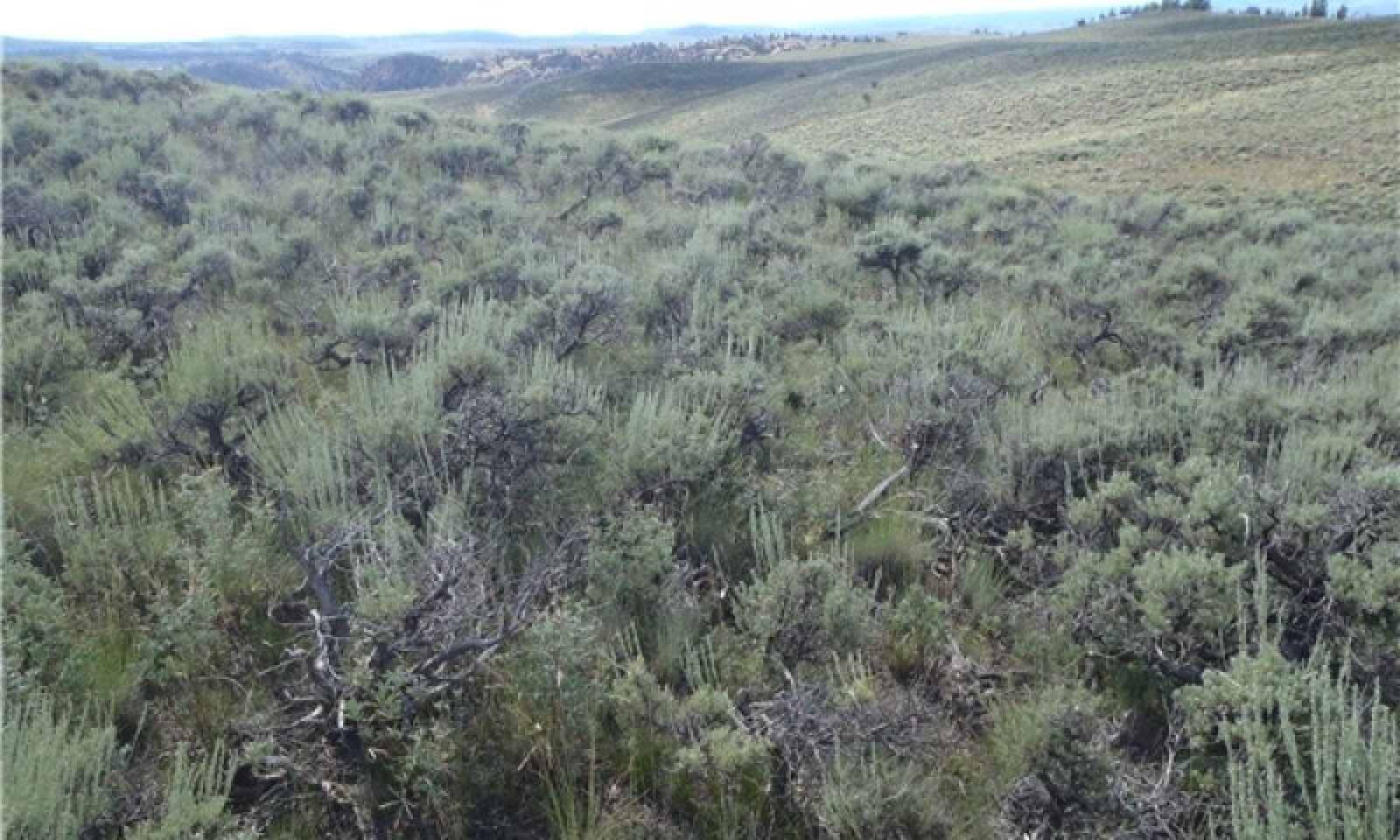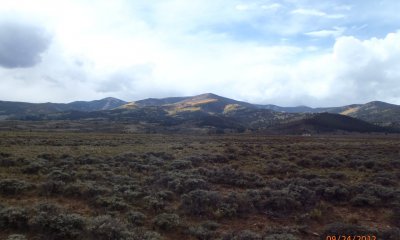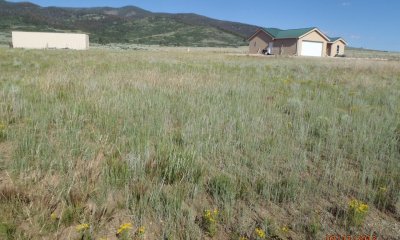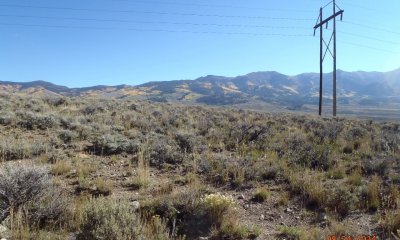
Mountain Loam 10-18 PZ
Scenario model
Current ecosystem state
Select a state
Management practices/drivers
Select a transition or restoration pathway
- Transition T1A More details
- Transition T1B More details
- Restoration pathway R2A More details
- Transition T2B More details
- Restoration pathway R3A More details
- Transition T3A More details
- Restoration pathway R4B More details
- Restoration pathway R4A More details
-
No transition or restoration pathway between the selected states has been described
Target ecosystem state
Select a state
Description
Grass is dominant with mountain big sagebrush subdominant. The site is treeless, however trees commonly are in the general vicinity. The canopy cover of mountain big sagebrush can be 15 to 40 percent within 20 years after a low-intensity fire or other disturbance, and it can be as high as 40 to 50 percent in undisturbed areas (Winward, 2004; Miller and Eddleman, 2001; Nelle et al., 2000). After a severe fire, it may be 30 years or more before mountain big sagebrush becomes dominant again (Nelle et al., 2000).
Resilience management
The major shrubs are mountain big sagebrush and yellow rabbitbrush. This reference state shows the greatest resistance to disturbance and is maintained in areas where careful grazing management has been used over a long period for the establishment of understory species and increased vigor of stressed plants.
The site is subject to frequent periods of drought and fires of mixed intensity and frequency. The fire return interval (FRI) is 10 to 70 years (Howard, 1999). Sagebrush species less than 50 years old are easily killed by fire. Most forb species that re-sprout from a caudex, corm, bulb, rhizome, or rootstock recover rapidly following fire, and low-growing or mat-forming forbs such as pussytoes or buckwheat may be severely damaged and set back by fire (Miller and Eddleman, 2001).
Submodel
State 2
Degraded: Shrub Dominant



Description
State 2 is a sagebrush-dominant community. It has more shrub cover and less understory cover as compared to state 1. State 2 has an even-structured, single-aged sagebrush stand. Grasses such as western wheatgrass and bottlebrush squirreltail are still present. The abundance of low shrubs such as yellow rabbitbrush, spineless horsebrush and snakeweed have also increaed. Species diversity is lower and bare ground is greater causing increased erosion and less water retention.
Resilience management
This state has decreased resilience to disturbance as bare ground and erosion are prevalent.
Description
This state is characterized by sagebrush removal due to fire or shrub management treatments, which may include chaining, disking, and mowing. The community dynamics are similar those of the reference state. This state could persist for long periods. Sagebrush will start to re-establish when the conditions are favorable. This site historically has been seeded to perennial species such as crested wheatgrass and Russian wildrye. Due to changes in soil properties and the presence of seeded plants, this state is not likely to return to the reference state unless restoration practices are applied.
Resilience management
This state has become less resilient to drought and disease as non-native plants do not enhance native soil microbial communities.
Submodel
Description
State 4 consists dominantly of sagebrush. This state has more shrub cover and less understory cover. The community is an even-structured, single-aged stand. Less introduced species are in this state. The abundance of low shrubs such as yellow rabbitbrush and spineless horsebrush has increased, replacing some of the herbaceous component in the understory. This state has minimal diversity of species.
Resilience management
This is a degraded state. The microbial community is minimal. Plant cover and diversity is minimal. Erosion has accelerated.
Mechanism
Repetitive defoliation with high utilization of palatable species for extended periods during the growing season can reduce the amount of fine fuel in the understory, which favors sagebrush encroachment. Lack of fire over time can cause this transition (McIver et al., 2010). Extended periods of drought and lack of insect and pathogen activity can result in a single-aged stand of sagebrush. This transition is characterized by a decrease in the understory and an increase in the amount of bare ground between the shrubs and other evidence of soil erosion. The depletion of fine fuel due to improper grazing, shifts the fire regime from relatively frequent fires of low to mixed severity (10- to 50-year mean fire return interval) to less frequent fires of high severity (more than 50-year mean fire return interval) (McIver et al., 2010).
Mechanism
Historically, this transition has resulted from a catastrophic wildlife but it can be induced by human activity (shrub management or prescribed burning). Introduced species are seeded. Short-term loss of topsoil and a reduction in the water-holding capacity in the upper part of the soil occurs, and the diversity of species above and the microbial community below ground have decreased.
Mechanism
This transition is caused by fire, disease, or by human activity (shrub management or prescribed burning). Native species are seeded. Rest from grazing for seeded plant establishment is recommended.
Mechanism
This transition is caused by human activity (shrub management or prescribed burning) or a catastrophic wildfire. Introduced species are seeded.
Mechanism
This site may be restored to resemble the grass dominated with mountain big sagebrush community of the reference state by seeding commercial mixtures of native grasses, forbs, and shrubs. Selective removal of introduced species also may be needed. If properly managed, a semblance of the diversity and complexity of the reference state can be restored.
Mechanism
Over time, without regular maintenance the introduced species decrease in production and density, creating areas by which shrubs can encroach and re-establish. The decrease of soil health over the years have also made it difficult for native species to re-colonize. Shrubs eventually gain a competitive advantage and increase, along with bare ground, and erosion.
Mechanism
The site may be restored to resemble the grass/shrub mix community in the reference state by seeding commercial mixtures of native grasses, forbs, and shrubs. Selective removal of introduced species also may be needed. If properly managed, a semblance of the diversity and complexity of the reference state can be restored. This restoration pathway is intensive if attempted on a large scale.
Mechanism
Fire and wet periods or substituted irrigation can cause the mature, single-aged shrub communities to transition to grassland if proper grazing is implemented and sufficient seed is in the seedbank to regenerate the understory species. If sufficient seed or mature plants are not available, reseeding may be needed. Shrub management practices such as prescribed burning can be used to assist in restoring state 4 to state 3.
Model keys
Briefcase
Add ecological sites and Major Land Resource Areas to your briefcase by clicking on the briefcase (![]() ) icon wherever it occurs. Drag and drop items to reorder. Cookies are used to store briefcase items between browsing sessions. Because of this, the number of items that can be added to your briefcase is limited, and briefcase items added on one device and browser cannot be accessed from another device or browser. Users who do not wish to place cookies on their devices should not use the briefcase tool. Briefcase cookies serve no other purpose than described here and are deleted whenever browsing history is cleared.
) icon wherever it occurs. Drag and drop items to reorder. Cookies are used to store briefcase items between browsing sessions. Because of this, the number of items that can be added to your briefcase is limited, and briefcase items added on one device and browser cannot be accessed from another device or browser. Users who do not wish to place cookies on their devices should not use the briefcase tool. Briefcase cookies serve no other purpose than described here and are deleted whenever browsing history is cleared.
Ecological sites
Major Land Resource Areas
The Ecosystem Dynamics Interpretive Tool is an information system framework developed by the USDA-ARS Jornada Experimental Range, USDA Natural Resources Conservation Service, and New Mexico State University.





